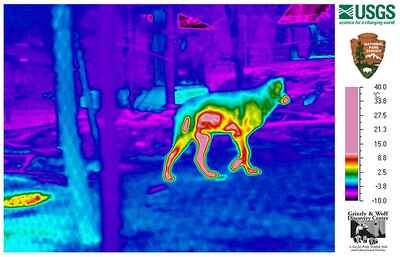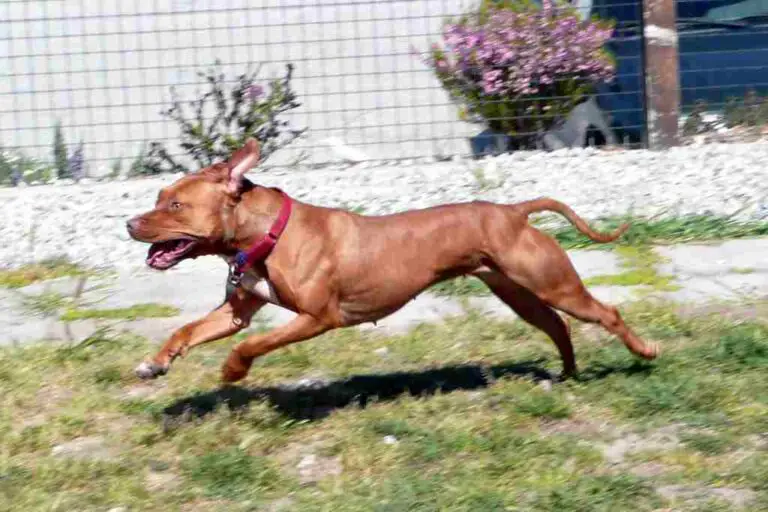5 Examples of Infrared Waves Discussed
Examples of infrared waves are; solar infrared, thermal emissions from fire, long-wave infrared in wireless communication systems, observed radiation in thermal imaging, as well as artificial infrared from electric heaters and infrared lamps, among others.
This article discusses the examples of infrared waves, as follows;
1). Solar Infrared (as one of the Examples of Infrared Waves)
Solar radiation is an example of an electromagnetic wave spectrum that contains infrared waves.
Solar infrared is the portion of solar radiation that is immediately below visible sunlight in terms of frequency, and has a wavelength range of 700 nm to 1 mm. It accounts for about 45% of total solar radiation reaching the Earth's surface [1].
The infrared wave portion of solar radiation is responsible for a significant portion of solar thermal energy. It is very important because solar radiation is itself the primary source of heat and light energy for the Earth's ecosystem.
It can be argued that solar infrared is the primary form of infrared radiation in our solar system. Infrared light from the Sun accounts for a significant portion of surface and interior Earth's heat. It is also responsible for a significant amount of thermal radiation absorbed and emitted by planetary bodies in the solar system.
These planetary bodies have been proven to contain and emit notable amounts of infrared radiation, which is observed through infrared astronomical imaging, and can be used to study and characterize cosmological features in outer space.
Objects on Earth absorb, reflect and emit infrared radiation from the Sun, and the manner of interaction with infrared varies significantly from one material to another, so that some materials are selective in their absorption and emission [8].

2). Thermal Emissions from Fire
Like the sun, fire emits thermal energy that can be described as an example of invisible infrared radiation.
It is useful to note that thermal infrared emissions from fire are mostly stored energy from the Sun, since solar energy is stored in most renewable materials like biomass, that can undergo combustion to produce infrared radiation, or heat.
Because fire is a highly-energetic heat source, it emits not only infrared radiation, but also other electromagnetic waves like visible light [6]. When studying or describing thermal infrared radiation from fire, it is important to note the distinction between this invisible radiation and the visible light that is simultaneously emitted by fire.
Thermal emissions from fire represent a crucial example of infrared waves, because they can be used flexibly, for various purpose that range from domestic heating to industrial steam production. The same principle of combustion that is behind fire and its infrared emissions, is used in other forms with systems for electricity generation, like gasoline generators and steam turbine engines.
Infrared waves from fire are particularly high in frequency and energy exposition, so that even short-term exposure can be very hazardous.
3). Long-Wave Infrared (LWIR) in Wireless Communication (as one of the Examples of Infrared Waves)
Long-wave infrared refers to a sub-type of infrared radiation that ranges in wavelength from 8 µm to 14 µm.
Applications of long-wave infrared, range from thermal imaging and astronomy, to wireless communication.
Long-wave infrared is particularly suitable for communication purposes because of its long wavelength, which reduces the rate of deflection by Rayleigh scattering, as the waves come in contact with obstacles in their path of propagation.
Another advantage is the flexibility of use. Long-wave infrared radiation can be used within a specified range of wavelength or frequency to achieve the maximum performance. An example is the use of 8µm to 12µm infrared for atmospheric data transmission [7].
It is important to note that Mid-Wave Infrared (MWIR) is also often used for wireless communication. In some cases, MWIR and LWIR are used in combination for high-speed satellite communication [4].
Long-wave infrared is far more efficient and effective, than short and mid-wave infrared respectively, with regards to wireless communication. Its resistance to deflection and scattering enable it achieve high-quality transmission under conditions of atmospheric turbulence that include excessive clouding, smoke and fog [5].
4). Observed Radiation in Thermal Imaging
Infrared Thermal Imaging (IRTI), of Infrared Thermography (IRT); is the observation and study of environmental systems and phenomena, through the detection of infrared emissions from various objects.
In thermal imaging, an infrared camera is used to detect features based on the invisible heat rays they emit. The camera's heat sensors convert this invisible radiation to visual data that may be collected in still-image or video formats.
Through thermal imaging, some important details in a given environment are highlighted, which may be difficult or impossible to detect using visual light imaging or photography. Infrared waves are observed in thermal images as quantifiable and distinctive color zones, that differ with temperature variations.
These quantifiable observations can be analyzed to yield useful information about a given environment, organism, object or phenomenon [9].
In ecosystems with significant nocturnal activity, infrared thermal imaging is useful for monitoring night-time organic activity [3] and temporal changes, as part of measures for environmental management, and wildlife conservation, as well as protecting of forests from unsustainable human activities.
Lastly; infrared thermography is also useful for noninvasive diagnosis of diseases, such as peripheral vascular ailments [2].

5). Artificial Infrared from Electric Lamps and Heaters (as one of the Examples of Infrared Waves)
Electric heaters use infrared waves for radiative heating of a space, or a substrate like water.
In electrical heating appliances, infrared waves are emitted from the heating element of the system, through radiation. It must be noted that these appliances are usually capable of transmitting heat through other modes of thermal energy transfer, like conduction and convection.
Incandescent bulbs also emit infrared radiation, which explains why electric lamps that utilize incandescent technology, tend to have a space-heating effect on their surrounding.
Conclusion
Examples of infrared waves are;
1. Solar Infrared
2. Thermal Emissions from Fire
3. Long-Wave Infrared in Wireless Communication
4. Observed Radiation in Thermal Imaging
5. Artificial Infrared from Electric Lamps and Heaters
References
1). Austin, E.; Geisler, A. N.; Nguyen, J.; Kohli, I.; Hamzavi, I.; Lim, H. W.; Jagdeo, J. (2021). "Visible light. Part I: Properties and cutaneous effects of visible light." J Am Acad Dermatol. 2021 May;84(5):1219-1231. Available at: https://doi.org/10.1016/j.jaad.2021.02.048. (Accessed 4 April 2023).
2). Bagavathiappan, S.; Saravanan, T.; Philip, J.; Jayakumar, T.; Raj, B.; Karunanithi, R.; Panicker, T. M.; Korath, M. P.; Jagadeesan, K. (2009). "Infrared thermal imaging for detection of peripheral vascular disorders." J Med Phys. 2009 Jan;34(1):43-7. Available at: https://doi.org/10.4103/0971-6203.48720. (Accessed 4 April 2023).
3). Fernando, S. (2017). "Seeing in the dark and more: Facts and FAQs about thermal imaging." Available at: https://news.mongabay.com/2017/03/facts-and-faqs-about-thermal-imaging/. (Accessed 4 April 2023).
4). Flannigan, L.; Yoell,.L.; Xu, C. (2022). "Mid-wave and long-wave infrared transmitters and detectors for optical satellite communications - A review." Journal of Optics 24(4). Available at: https://doi.org/10.1088/2040-8986/ac56b6. (Accessed 3 April 2023).
5). Hutchinson, D. (2007). "Richards, R. All-weather long-wavelength infrared free space optical communications." J Optic Comm Rep 4, 214–224. Available at: https://doi.org/10.1007/s10297-006-0078-0. (Accessed 3 April 2023).
6). Kubovský, I.; Püšpöky, J. (2017). "Observing of the fire development in visible and infrared region of the electromagnetic spectrum." Available at: https://www.researchgate.net/publication/322337125_Observing_of_the_fire_development_in_visible_and_infrared_region_of_the_electromagnetic_spectrum. (Accessed 4 April 2023).
7). Pavelchek,.A.; Trissel,.R. F.; Plante, J.; Umbrasas, S. (2004). "Long-wave infrared (10-μm) free-space optical communication system." Proceedings of SPIE - The International Society for Optical Engineering. Available at: https://doi.org/10.1117/12.504940. (Accessed 3 April 2023).
8). Penn , M. J. (2014). "Infrared Solar Physics." Living Rev Sol Phys. 2014;11:2. Available at: https://doi.org/10.12942/lrsp-2014-2. (Accessed 3 April 2023).
9). Zhang, Z.; Cao, Z.; Deng, F.; Yang, Z.; Ma, S.; Guan, Q.; Liu, R.; He, Z. (2021). "Infrared Thermal Imaging of Patients With Acute Upper Respiratory Tract Infection: Mixed Methods Analysis." Interact J Med Res. 2021 Aug 19;10(3):e22524. Available at: https://doi.org/10.2196/22524. (Accessed 3 April 2023).






